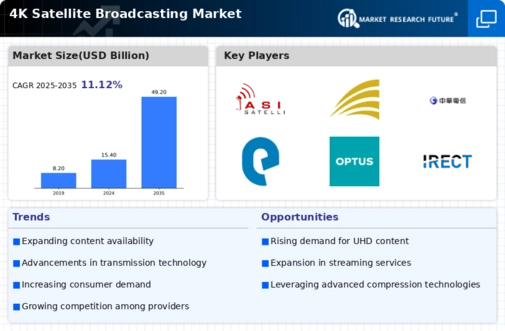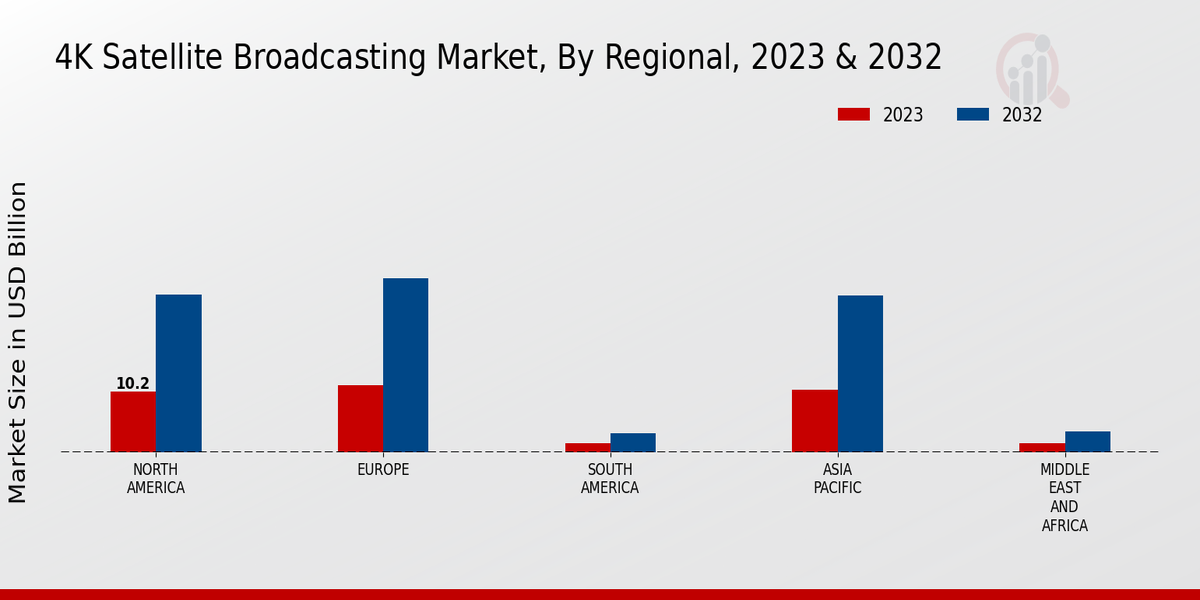Major players in the 4K satellite broadcasting market are constantly striving to gain a competitive edge by investing in research and development, forming strategic partnerships, and expanding their product portfolios. They are also focusing on customer satisfaction by providing innovative and reliable products and services.
Leading market players are actively involved in mergers and acquisitions to strengthen their market position and expand their reach. The 4K Satellite Broadcasting Market is characterized by intense competition, with companies vying for market share and differentiation.
Intelsat S.A. is a leading provider of satellite services worldwide. The company offers a range of services, including satellite broadband, video distribution, and mobility services. Intelsat S.A. has a global network of satellites and teleports, which enables it to provide services to customers in over 200 countries and territories.
The company's 4K satellite broadcasting services are used by broadcasters and content providers to deliver high-quality video content to viewers around the world. Intelsat S.A. is committed to providing innovative and reliable satellite services to its customers and is well-positioned to continue to be a leader in the 4K satellite broadcasting market.
SES S.A. is another major player in the global 4K satellite broadcasting market. The company provides a range of satellite-based services, including video distribution, data connectivity, and mobility services. SES S.A. has a global network of satellites and teleports, which enables it to provide services to customers in over 160 countries and territories.
The company's 4K satellite broadcasting services are used by broadcasters and content providers to deliver high-quality video content to viewers around the world. SES S.A. is committed to providing innovative and reliable satellite services to its customers and is well-positioned to continue to be a leader in the 4K satellite broadcasting market.




















Leave a Comment